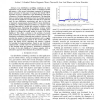Free Online Productivity Tools
i2Speak
i2Symbol
i2OCR
iTex2Img
iWeb2Print
iWeb2Shot
i2Type
iPdf2Split
iPdf2Merge
i2Bopomofo
i2Arabic
i2Style
i2Image
i2PDF
iLatex2Rtf
Sci2ools
118
Voted
IROS
2009
IEEE
2009
IEEE
A statistical approach to gas distribution modelling with mobile robots - The Kernel DM+V algorithm
— Gas distribution modelling constitutes an ideal application area for mobile robots, which – as intelligent mobile gas sensors – offer several advantages compared to stationary sensor networks. In this paper we propose the Kernel DM+V algorithm to learn a statistical 2-d gas distribution model from a sequence of localized gas sensor measurements. The algorithm does not make strong assumptions about the sensing locations and can thus be applied on a mobile robot that is not primarily used for gas distribution monitoring, and also in the case of stationary measurements. Kernel DM+V treats distribution modelling as a density estimation problem. In contrast to most previous approaches, it models the variance in addition to the distribution mean. Estimating the predictive variance entails a significant improvement for gas distribution modelling since it allows to evaluate the model quality in terms of the data likelihood. This offers a solution to the problem of ground truth evaluat...
| Added | 24 May 2010 |
| Updated | 24 May 2010 |
| Type | Conference |
| Year | 2009 |
| Where | IROS |
| Authors | Achim J. Lilienthal, Matteo Reggente, Marco Trincavelli, Jose-Luis Blanco, Javier Gonzalez |
Comments (0)

